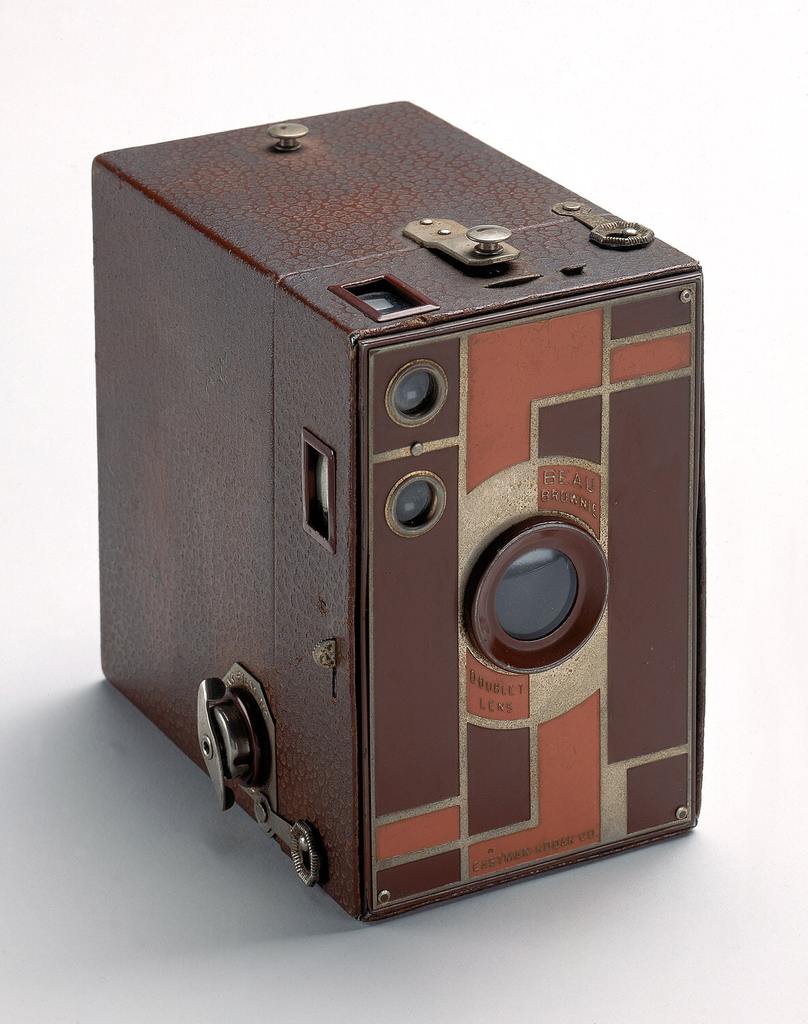A “Beau” is as a man greatly concerned with appearance. And like the word “Dandy” it is often applied to men who affect extreme elegance; who are unduly concerned with looking stylish and fashionable; and who place particular importance on leisurely pastimes. We know F. Scott Fitzgerald’s charming Jay Gatsby as a shining example of a beau or a dandy in the late-1920s. Appropriately, the Eastman Kodak Company named this camera, designed by Walter Dorwin Teague (1853-1960), the Beau Brownie. Distinguished for its elegant, fashionable, and stylish appearance, the modern camera was fit for any beau or dandy of the day.
From the late-1920s through the 1950s, Teague helped pioneer a new spirit in design based on the fusion of art and industry. He forged the new field of industrial design, along with Norman Bel Geddes, Raymond Loewy, and Henry Dreyfuss, designing products for mass production and mass consumption. As styling became the key to selling, Teague and his contemporaries placed an emphasis on surface appearance and ease of use that manifested in a geometric aesthetic, representative of the modern age.
Teague’s Beau Brownie camera captures both this unity of art and industry, and the new spirit of design. Kodak first marketed the Brownie camera in 1900 as an affordable, user-friendly, lightweight camera designed for the masses; by 1910, one third of American households owned a Brownie camera. In the late-1920s, Kodak commissioned Teague to modernize and improve the appearance of its all-black cameras. This was Teague’s first major industrial client, and it proved to be an enduring relationship, as the two collaborated until Teague’s death in 1960.
Teague designed and embellished the faceplates of a number of new and existing cameras to modernize and improve their appearance. The Beau Brownie, manufactured from 1930 to 1933, being one of them. Its enamel faceplate, featuring a series of interlocking geometric forms that accent the shape of the box and the camera lens, came in a range of two-tone high-gloss options, including black, blue, green, rose, and brown. Teague designed both the leatherette covering the rest of the camera and the matching carrying case to coordinate with the modern faceplate. Thus, like the dandy of the 1920s and 1930s, Teague’s Beau Brownie expressed the beauty of surface appearance, suitably designed for the leisurely pastime of photography.
Rebecca Gross is a freelance researcher and writer with an interest in twentieth-century American decorative arts, design, and visual culture. She has a Masters in the History of Decorative Arts and Design from Parsons The New School for Design, and is a PhD candidate in History (American Studies) at the University of Sydney in Australia.

One thought on “A Dandy of a Camera”
joann hirata on August 14, 2019 at 5:24 pm
I believe Walter Dorwin Teague was born in 1883 (not 1853)…